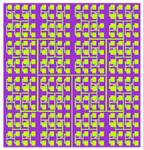Externet
Advanced Member level 2
- Joined
- Jan 29, 2004
- Messages
- 584
- Helped
- 28
- Reputation
- 58
- Reaction score
- 30
- Trophy points
- 1,308
- Location
- Mideast US
- Activity points
- 5,744
Hi.
What is the impedance of two 50Ω antennas connected in parallel ?
What is the impedance of two 50Ω antennas connected in parallel ?
